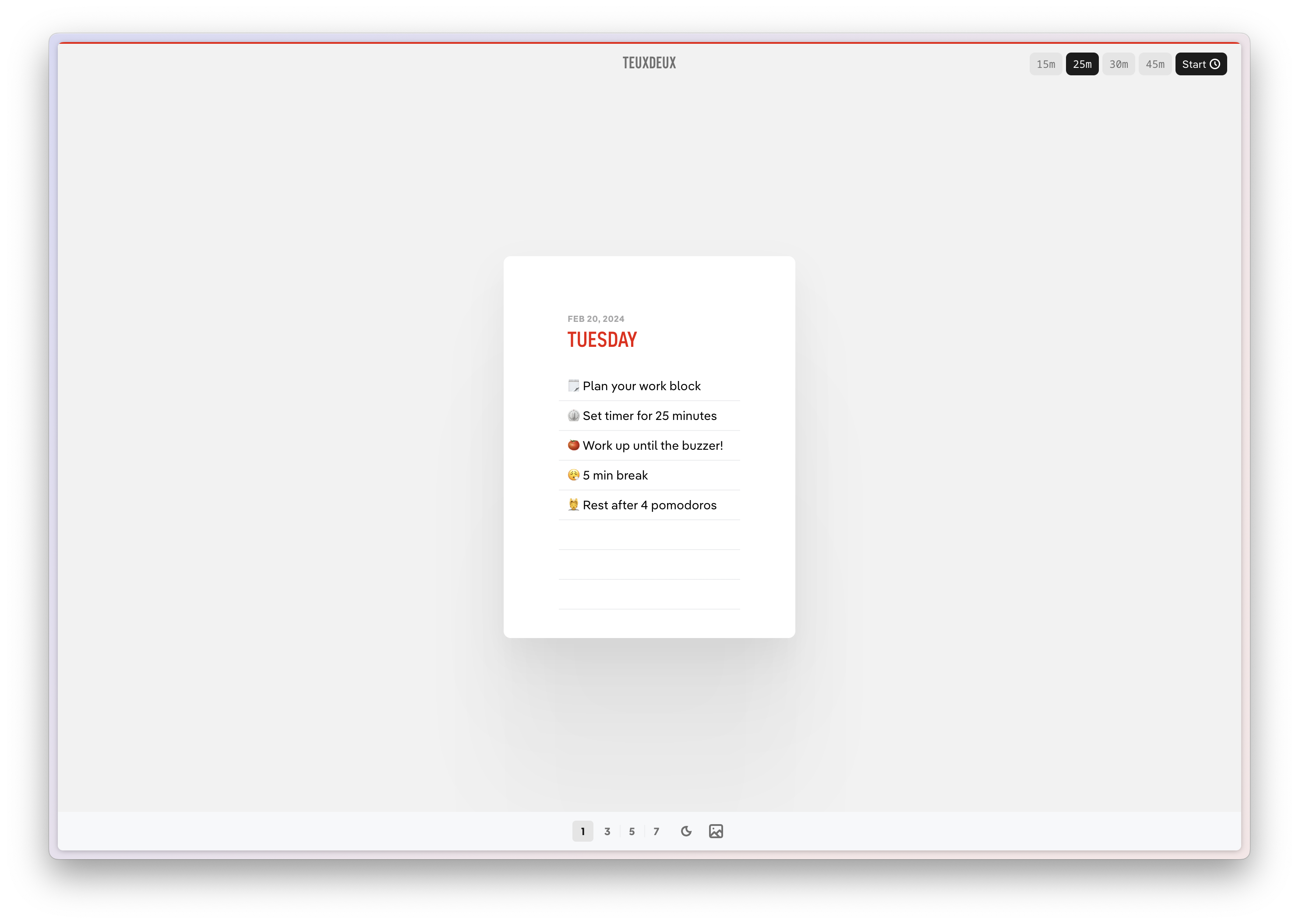At TeuxDeux, we're all about trying out productivity frameworks and time management tools to see what works best. The Pomodoro Technique is one of the most well known, popular for its relative simplicity. All it requires is a timer (bonus points if it's tomato-shaped).
What is the Pomodoro Technique?
Developed in the late 1980s, Francisco Cirillo, a university student at the time, was having trouble focusing on his studies. His solution? To break his day up into short intervals called pomodoros (after the shape of his kitchen timer) to get things done.
The Pomodoro Technique involves working in focused sprints called "pomodoros" (Italian for tomato). Each pomodoro makes up 25 minutes after which you take a short break. After a few pomodoros are completed, you take a longer break to recharge–around 15 to 30 minutes.

The beauty is in its simplicity; all you need is a timer and a to-do list. Here's how to get started:
Choose a task or series of tasks to work on
Set your timer for 25 minutes
Stop working once the 25 minute timer ends
Take a 5-minute break then start a new pomodoro (25 min)
After 4 pomodoros take a long break (20-30 minutes)

Using the Pomodoro Technique in TeuxDeux
Focus mode in TeuxDeux lets you zero in on the day's to-do list to minimize distraction. Entering focus mode hides all your lists except for the current day and brings it into center view so you aren't tempted to tinker with anything beyond it.
You can choose from a few timers, including the 25 minute pomorodo, and start your countdown for one uninterrupted block of work.

How to Pomodoro effectively
Pomodoro-ing is pretty straightforward but there are a few things to remember if you want to make a meaningful difference in your productivity:
Decide what you'll work on before starting a timer: It's listed above as Step 1 but it's worth repeating. Pomodoro is designed to optimize time for deep work. In practice, this means moving any tasks to 'Today' and prioritizing them before entering focus mode and starting your timer.
Batch small tasks together. Tasks that require less than one pomodoro should be grouped together.
Break down complex tasks: Tasks that take more than four pomodoros should be divided into smaller, actionable steps. It'll be easier to track progress and build momentum.
Pomodoros are indivisible: Research shows that it takes roughly 23 minutes to regain focus after being distracted. If your pomodoro is interrupted, take the 5 minute break and set a timer for your next interval.
If a Pomodoro timer is set, it must ring. Take advantage of extra time left over as time to review your work, make improvements and note what you've learned.
Why the Pomodoro Technique works
The Pomodoro Technique takes the best what we know works well for human attention and focus– time blocking, deep work, reducing context switching–and turns it into a simple framework that's easy to remember and easy to implement.
